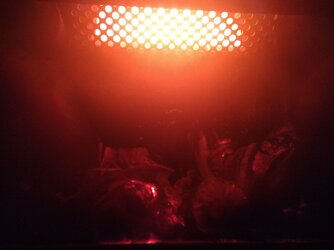lsucet
Minister of Fire
First fire of the season was two days ago. I have been till now letting the mini split do its thing and being lazy to load the stoves.
Just fired one of the them. Temps have been here for about a month mid 20s to mid 30s through the nights.
All what I can say is that It feels good to feel the warmth of wood burning.
Mimi split system doing a wonderful job and is good to have an alternative, but nothing feels so good like wood burning. I am hooked again.🤭
Just fired one of the them. Temps have been here for about a month mid 20s to mid 30s through the nights.
All what I can say is that It feels good to feel the warmth of wood burning.
Mimi split system doing a wonderful job and is good to have an alternative, but nothing feels so good like wood burning. I am hooked again.🤭



